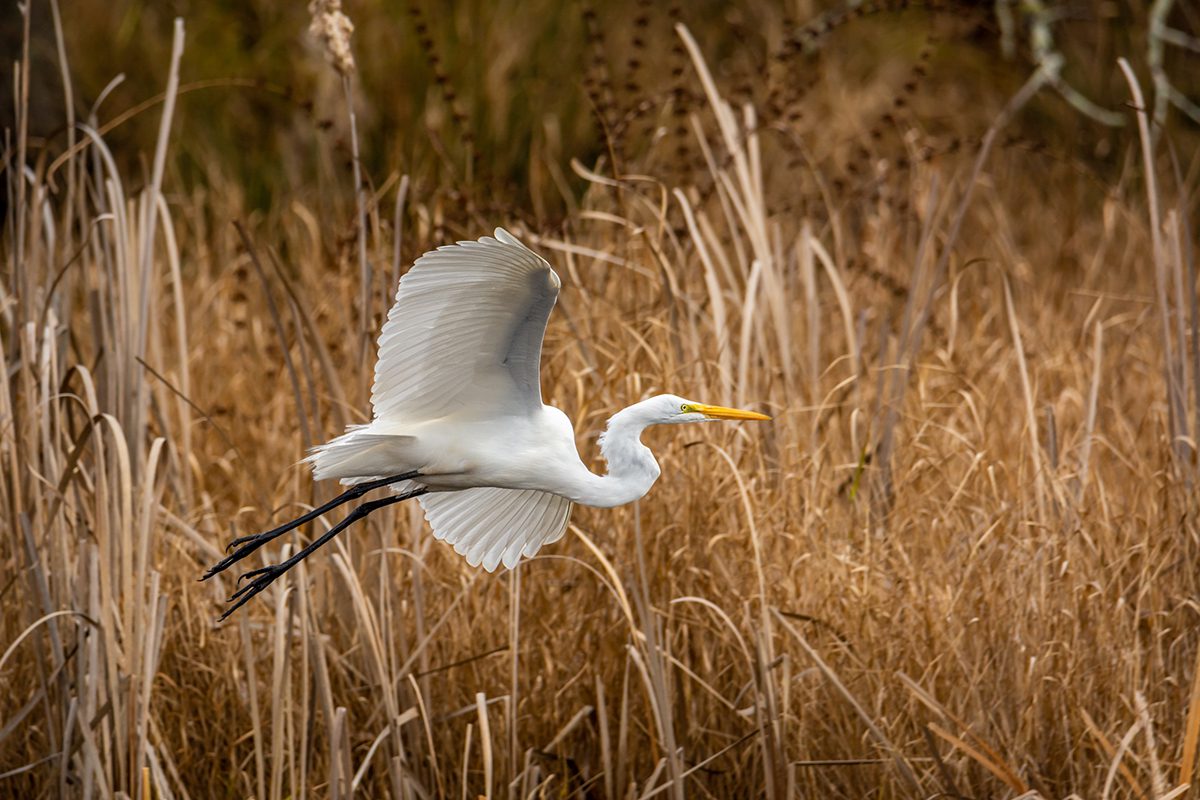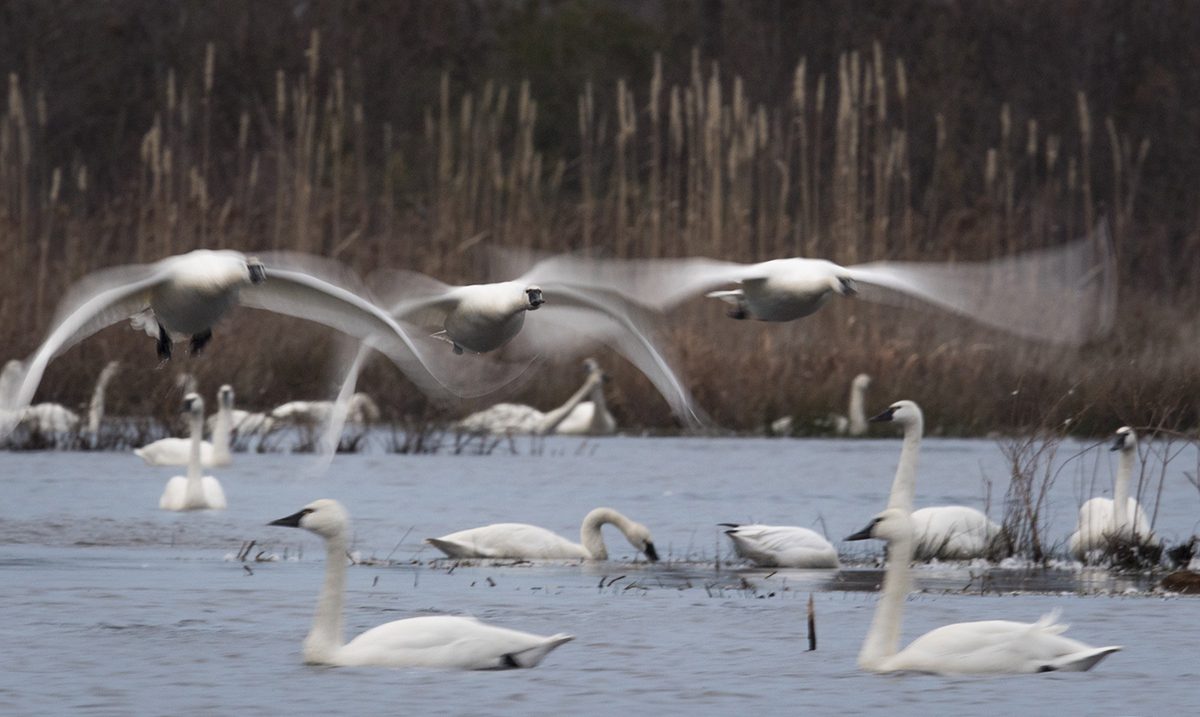
Last in a series.
Stretching north from the Wright Memorial Bridge at Kitty Hawk to the Back Bay of Virginia Beach, Currituck Sound was, at one time, the crown jewel of the Atlantic Flyway.
Supporter Spotlight
A large, freshwater estuary teeming with subaquatic vegetation and dotted with innumerable low-lying islands and marsh habitat for ducks, geese and swans, migratory waterfowl by the hundreds of thousands flocked to its waters every fall and winter.
By the early 20th century, market hunting and dozens of hunt clubs that placed no limit on the number of birds that could be taken sprang up and wiped out the population of waterfowl that migrated to the sound’s waters.
Those days are now the stuff of history and legend. Migratory waterfowl counts have plummeted. But now, researchers and conservationists from different organizations and fields are working together with a plan to restore the marsh habitat and make it more resilient – a blueprint that resulted from several years’ worth of pilot projects.
Audubon North Carolina, the state affiliate of the National Audubon Society, notes that at the Donal C. O’Brien Jr. Sanctuary at Pine Island, “waterfowl populations in the 1970s were around 300,000, recent surveys in Currituck Sound have counted only around 30,000 birds.”
Although bag limits have been in place for some time, balancing the take of hunters with the ability of waterfowl to repopulate, migratory waterfowl have not returned to their historic numbers. The reasons are complex, intertwined with an ecosystem that is unlike almost any other estuarine system anywhere.
Supporter Spotlight
Robbie Fearn, director of the Pine Island Sanctuary, recently described Currituck Sound for Coastal Review, noting how different it is from other estuarine systems.
“I don’t like to use the word unique, but it’s an unusual system in that it’s primarily freshwater,” he said, adding that the nearest ocean outlet for the sound’s waters is some 25 miles south at Oregon Inlet.
“The dynamics of the system are very unusual in that it is a giant shallow bathtub. And the water is sloshing around in it all the time. Most marsh systems don’t have this level of dynamism,” Fearn said, adding that it is “a really unusual system to be working in and exciting because every question is still ready to be answered.”
The environment, however, is not the only complex system to navigate in addressing how restore Currituck Sound’s restoration. Its shores include lands that are parts of Currituck County, the town of Duck and those managed by the U.S. Fish and Wildlife Service and the North Carolina Wildlife Commission.
To navigate the issues involved among multiple entities, Audubon in 2019 formed the Currituck Sound Coalition, a partnership that includes 14 members representing local governments, state and federal agencies, and research and educational institutions. The North Carolina Coastal Federation, which publishes Coastal Review, is part of the coalition.

In 2020, the North Carolina Attorney General’s office awarded Audubon North Carolina a $98,000 Environmental Enhancement Grant, or EEG. The work on the grant has been completed, but the grant was invaluable in creating a framework for marsh restoration and resilience, said Audubon Senior Coastal Resilience Program Manager Cat Bowler.
“The EEG funds allowed us to work with the Currituck Sound Coalition to develop the Marsh Conservation Plan for Currituck Sound. It also helped us to conduct a site analysis at Pine Island Sanctuary and start to develop the project concept for the marsh restoration pilot projects that Audubon is still working on with partners to this day,” Bowler said. “It really laid the groundwork for us to launch this work.”
The Currituck Sound Coalition Marsh Conservation Plan is a working publication that outlines how the group will work together to restore the waters of the sound. In the document’s “process overview,” the role the EEG played is specifically cited.
“In 2019, Audubon received funding from the North Carolina Environmental Enhancement Grant Program to support the coalition in developing a marsh conservation plan for Currituck Sound. A working group was formed to lead the planning process with partner members,” the plan’s authors wrote.
The plan outlines a wide scope of objectives to address sea level rise, erosion, invasive species, declining water quality, and loss of biodiversity — some of the issues listed that are known to affect Currituck Sound marshes.
“The beauty of the EEG funding was that it allowed us all to work together to share the knowledge we’re all developing separately and come together,” Fearn said. “I think it creates shared understanding. It created this connective tissue.”
The grant funding did more than create a communication network. The Audubon Society was also able to examine and compare different methods of marsh rehabilitation.
“The EEG actually funded a series of four pilot projects,” Bowler said. “Pilot marsh restoration projects looking at different types of living shoreline techniques, but also looking at more innovative restoration techniques like thin layer placement, where you take sediment and put it in thin layers on the surface of the marsh to help it accrete with sea level rise over time.”
Those research projects may prove to be critical in how much funding Currituck Sound restoration and resilience projects will be able to access. One of the partner organizations of the Coalition is Dr. Reide Corbett and the Coastal Studies Institute. Corbett, the institute’s executive director, explained the significance the research that is now being done will have in the future.
“When it comes to any sort of resilience, some of it’s education, but a lot of it’s going to come down to funds, (and) the fact is, you can’t get those funds until you really understand what the problems are and where the problems really need to be addressed,” Corbett said.
The EEG projects, though, are not close-ended programs, rather the nature of the projects and the way in which the money has been administered has created additional opportunities to develop strategies for marsh restoration.
Bowler said the EEG funds in combination with money from other state sources, the North Carolina Land and Water Fund and the Clean Water Management Trust Fund, as well as from Northwest National Coastal Resilience Fund, “and all three of those grants supported different elements of this project,” Bowler said. “To be able to bring the three different funding sources together to help enhance our partnerships in the region and also get some of this work planned and designed on the ground, I think that’s been a huge success.”







